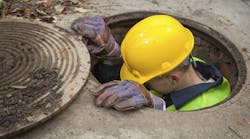On May 1st, the Occupational Safety and Health Administration issued a final rule to increase protections for construction workers in confined spaces.
Manholes, crawl spaces, tanks and other confined spaces are not intended for continuous occupancy. They are also difficult to exit in an emergency. People working in confined spaces face life-threatening hazards including toxic substances, electrocutions, explosions and asphyxiation.
Last year, two workers were asphyxiated while repairing leaks in a manhole, the second when he went down to save the first - which is not uncommon in cases of asphyxiation in confined spaces.
“In the construction industry, entering confined spaces is often necessary, but fatalities like these don’t have to happen,” said Secretary of Labor Thomas E. Perez. “This new rule will significantly improve the safety of construction workers who enter confined spaces. In fact, we estimate that it will prevent about 780 serious injuries every year.”
The rule will provide construction workers with protections similar to those manufacturing and general industry workers have had for more than two decades, with some differences tailored to the construction industry. These include requirements to ensure that multiple employers share vital safety information and to continuously monitor hazards - a safety option made possible by technological advances after the manufacturing and general industry standards were created.
“This rule will save lives of construction workers,” said Assistant Secretary of Labor for Occupational Safety and Health Dr. David Michaels. “Unlike most general industry worksites, construction sites are continually evolving, with the number and characteristics of confined spaces changing as work progresses. This rule emphasizes training, continuous worksite evaluation and communication requirements to further protect workers’ safety and health.”
Compliance assistance material and additional information is available on OSHA’s Confined Spaces in Construction Web page.



